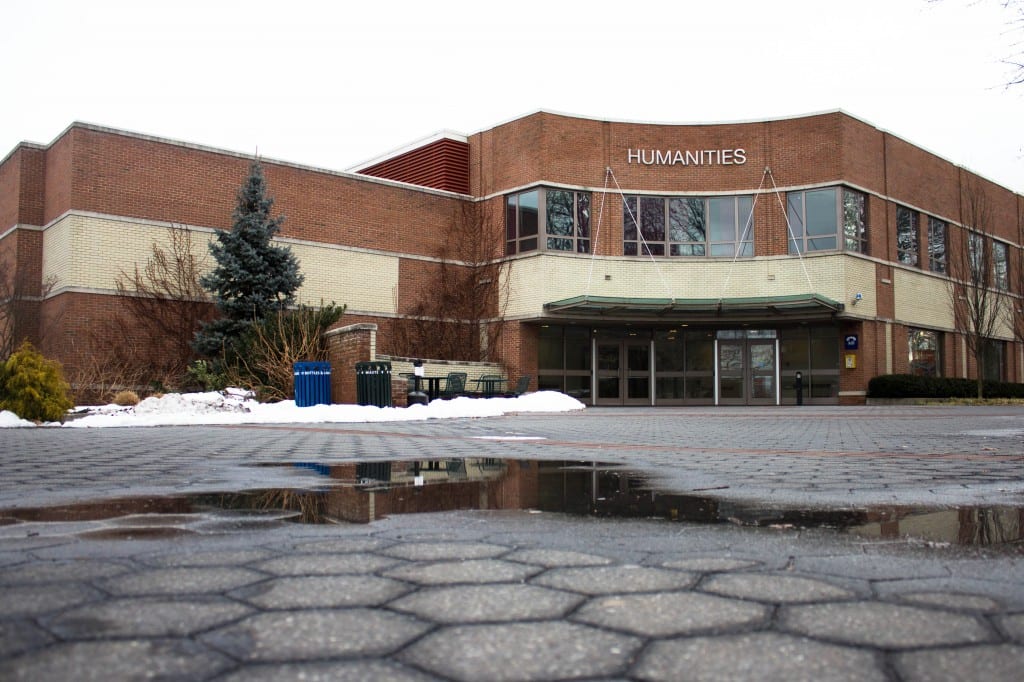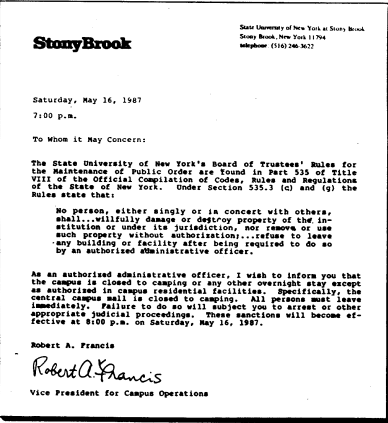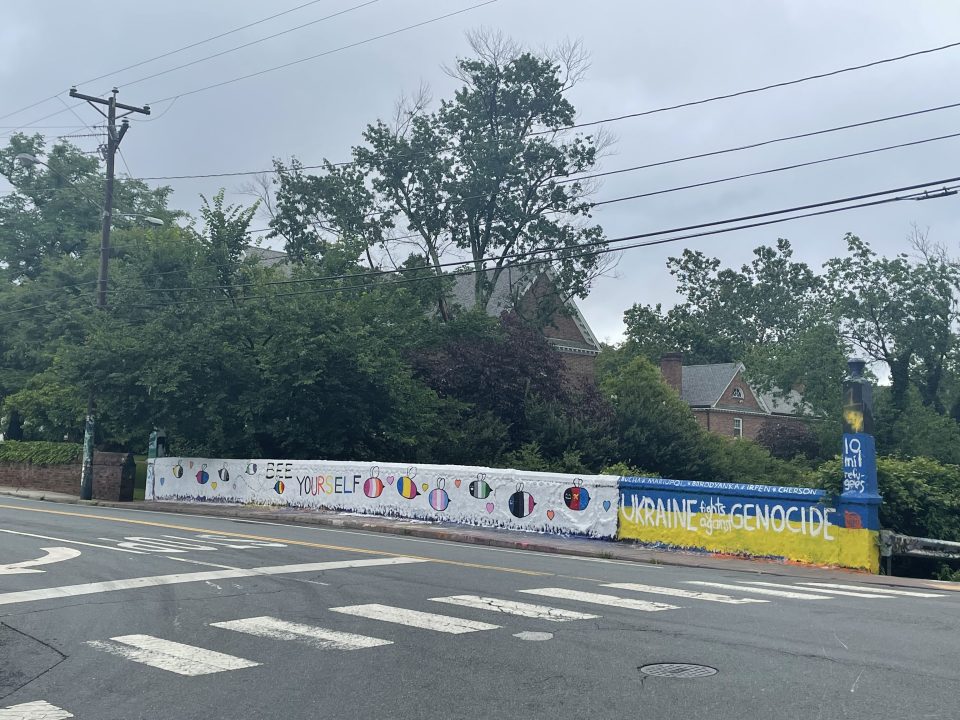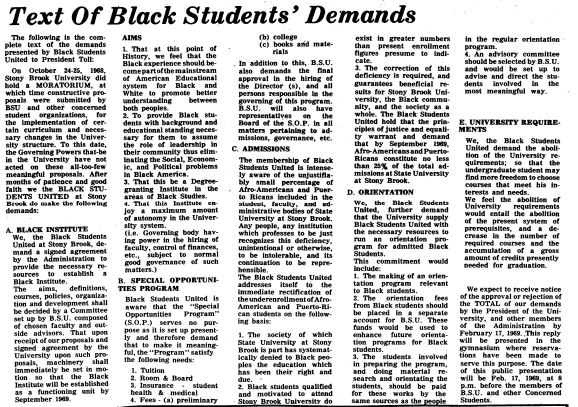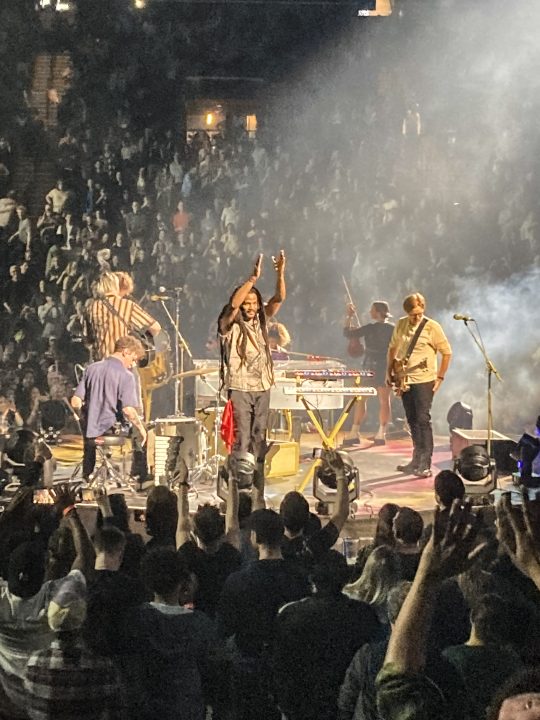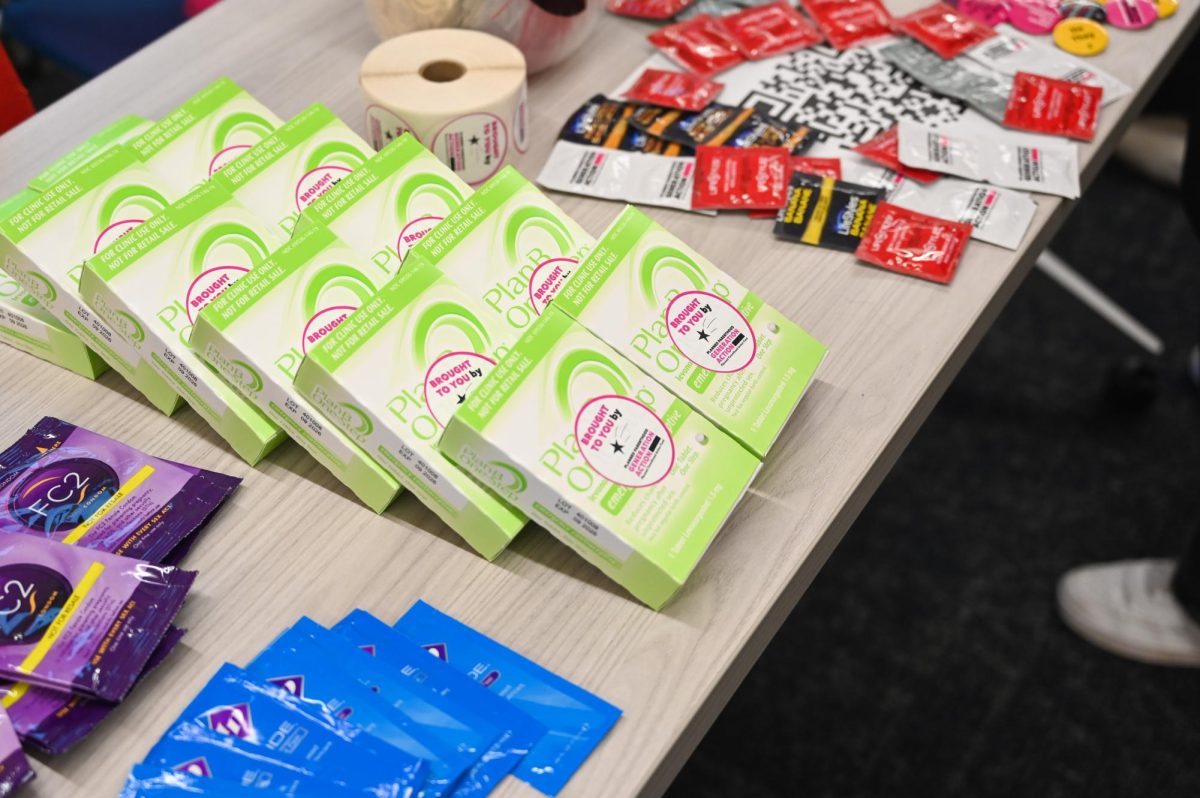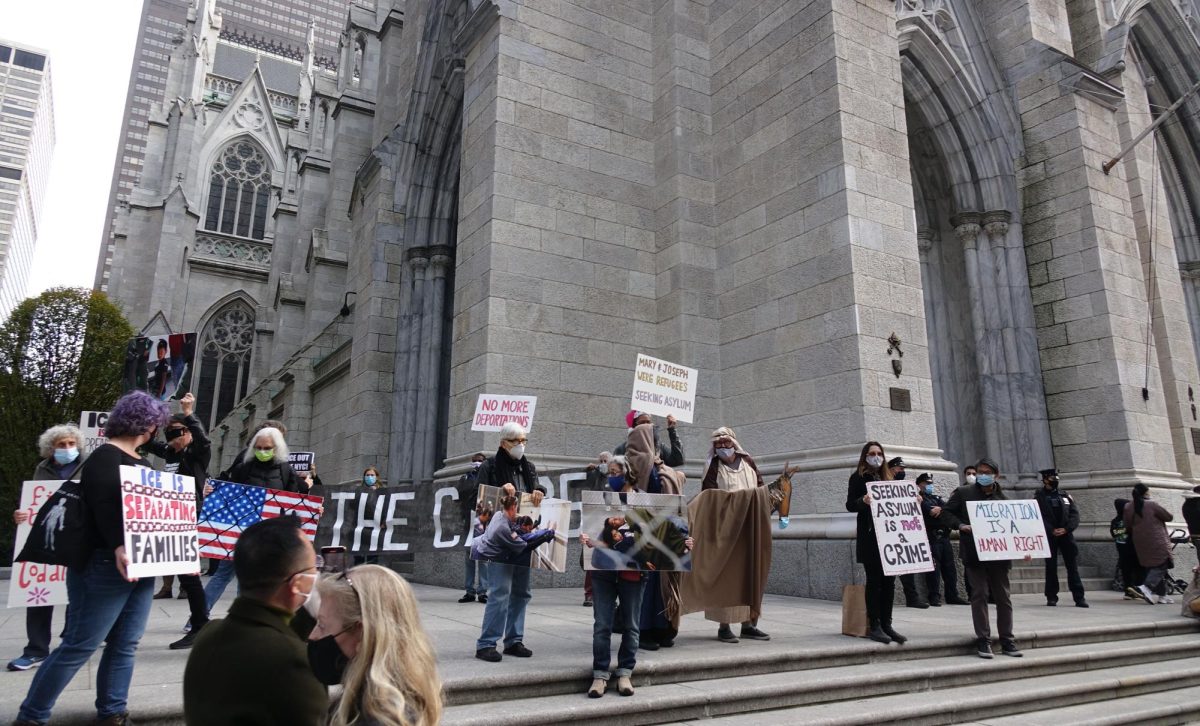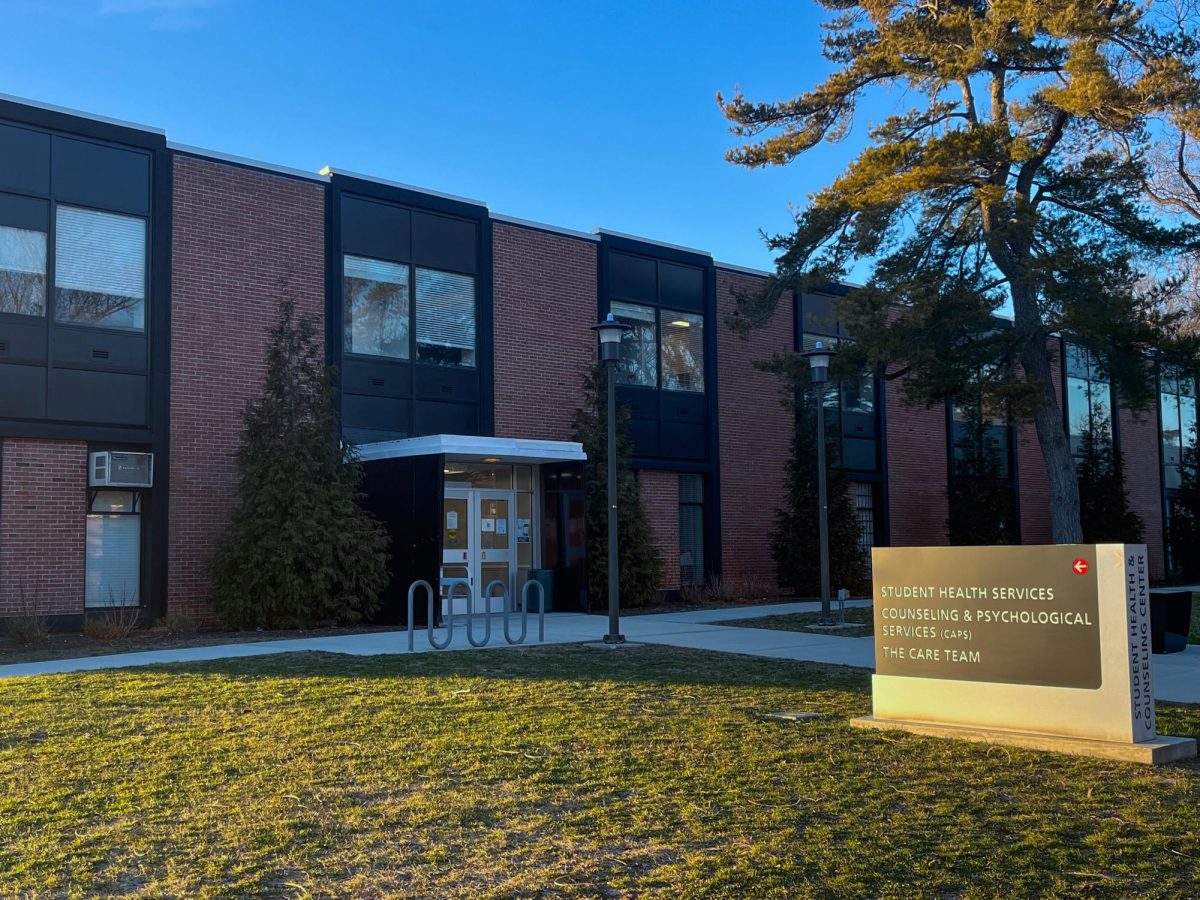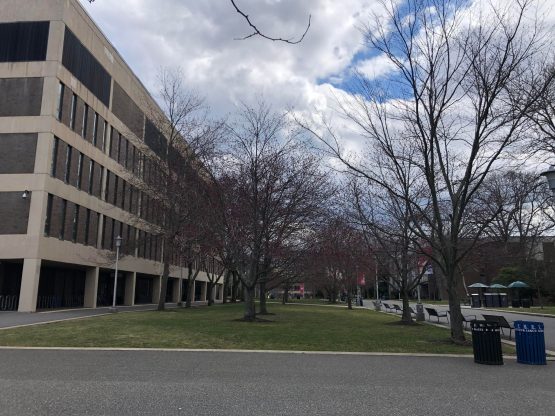
About two years ago, you could find students sitting on the Staller Steps as the days got warmer. It was the week before spring break, and there seemed to be a general feeling of excitement for the warm weather and the break that all college students look forward to.
No one knew that the week of March 9, 2020, would be one everyone would remember. That week changed everything for not only Stony Brook University students, but for the world. It was the beginning of the new normal.
Students were sent home for what they thought would only be a week. During spring break, however, residential students were notified that they had two to three days to move out for the semester.
When we all returned to campus after being back in our childhood homes for months watching TikToks and learning new recipes, it was an unfamiliar environment; one full of mask-wearing, social distancing at all times, constant cotton swabs and loads of hand sanitizer. It was the fall 2020 semester, but there still seemed to be weekly updates regarding the state of the coronavirus both locally and nationally.
Life lessons learned: Sara Ruberg’s story
Two years ago, I never would have guessed that I would still cover COVID-19 in my senior year, and probably will be for a while still. In the most genuine way, I feel very grateful today for everything lost then: working in our newsroom filled with voices and discussion, the warm embrace only grandmas can give, sharing meals with friends and family in restaurants. I’m reminded today that life and all of its little luxuries are precious.
But my biggest COVID lesson was a wake-up call. I learned to cherish my interactions and memories with other people just as much as I cherished my work. Before the pandemic, I was a barely functioning work machine, pushing myself to my limits mentally and emotionally. I would subject myself to hours upon hours of both school and journalism work until I was physically exhausted. Looking back, I realize I was on the path to burnout at a young age.
When I had to put together my first news story during the pandemic, sitting on an air mattress in my brother’s house in Kentucky hundreds of miles away from my campus, left without the camaraderie of all the other journalism students, it felt unusual and sad. The presence of others was keeping me afloat during those really long nights in the newsroom.
Life can be unpredictable and grueling, but it’s the people I’ve surrounded myself with that make it so enjoyable. It’s a life lesson I can’t forget.
Sincerely, I love journalism, and I still work endlessly to become a better journalist. The difference now is that my life includes taking time away from work and school to spend it with the people I love. It’s a sign of my appreciation for their presence and a sign that I am more than my work output. I am a journalist, but I am also a friend, a daughter, a girlfriend, a dancer, a foodie who loves trying new restaurants and most recently, an aunt. Now more than ever, I’m grateful for all the places I hold in other people’s lives, and I am thankful for their places in mine. The physical presence of my friends, family, professors, coworkers and classmates is a delight I will never take for granted again.
Is there beauty beneath the destruction?: Ethan Tam’s story
Every sports fan remembers where they were when they found out that Rudy Gobert tested positive. I was in the North Reading Room of the Melville Library on a Wednesday night when the notification popped up on my phone and suddenly, the athletic world was dealt its first colossal blow as the NBA shut down its season.
The virus’ impact could be felt in the days leading up to that moment. Less than 24 hours earlier, I was in Island Federal Arena’s press box to cover the America East men’s basketball semifinals — Stony Brook lost 64-58 to Hartford, ending its season.
However, the fear of COVID-19 emanated throughout the campus and the arena. Ticket sales were abruptly cut off just hours before tip-off to limit the number of people packed together in the building; the number of empty seats visible for a home postseason game was jarring. At the moment, my first thought was that Stony Brook was compromising its home-court advantage. Recorded attendance was 1,861, by far the lowest of the season and a figure smaller than that of the obligatory Division III game against Farmingdale State in November.
I was already making plans for a potential trip to Burlington, Vermont, if Stony Brook, the favored No. 2 seed, advanced to the America East championship game. When the Seawolves were upset, I was disappointed that I could not travel, but I shifted gears to the dominant women’s team, which had a 28-3 record at that point and completely dominated the conference since the start of the season. They would have hosted Maine on Friday the 13th in the title game with a bid to the NCAA Tournament on the line.
The morning after Gobert’s positive test, all hell broke loose. Powerful conferences began canceling their tournaments, with the most harrowing being the Big East doing so during halftime of an in-progress game at Madison Square Garden. The America East did so too, but the dagger came when the NCAA announced the canceling of men’s and women’s March Madness.
The Stony Brook women’s basketball team looked destined to reach its first NCAA Tournament in program history, but a nation-high 22-game win streak earlier in the season was all for naught. Days later, the NCAA said it wouldn’t even release a bracket for the canceled tournaments, preventing the Seawolves from officially claiming a tournament appearance. All of Stony Brook’s spring teams, which were in the middle of momentous stretches, had the rug pulled out from under them as well.
A sophomore when the world shut down, it would not be until my senior year when college life gained a semblance of normalcy again. Robbed of over a year and a half of making memories, this was not the experience I signed up for when I enrolled back in 2018.
Many will say that they radically transformed themselves throughout the course of the pandemic, and came out of it as a brand new person. Such drastic declarations didn’t apply to my life, even if I, like others, found refuge in online communities and the people that inhabited them.
Even though my classes were online during the 2020-21 year, I knew I needed to return to campus to expose myself to the college lifestyle, no matter how faint it was. Being one of the few left, it was eerie, but against the odds, I was still engaged in meaningful activities that I will remember for the rest of my life. Anything was preferable to remaining at home with the same people that I had already been trapped inside with for the last six months. I simply needed an escape. I could not remain there longer than I already had.
Waiting for the official end of the pandemic seems to be a futile task. The availability of the first vaccinations appeared to signal the conclusion to overly restrictive measures before the delta and omicron waves understandably added renewed cautions. The more new variables come into play, the more I’m reminded of just how tiring the whole pandemic is. As a result, romanticizing its role in transforming one’s personality ultimately just comes across to seize control of something so devastating.
From a Maverick to a Seawolf: Steven Keehner’s story
I hadn’t arrived at Stony Brook when COVID-19 was declared a pandemic. I was still enrolled at Mercy College in Dobbs Ferry, New York.
I wasn’t living up to my full potential as a Maverick. In November 2019, I left Mercy and explore other options. It used to be a perfect match for me, but I became dissatisfied and left.
I was going through the college application process for the second time. But as I was getting ready to make a life-altering decision, I didn’t expect the world to transform with me.
I didn’t expect COVID-19 to have much impact. Recalling the days of other outbreaks billed as world-changing, I made jokes about it in the months leading up to March.
After New Rochelle, a nearby city, became the epicenter of the sickness in New York, I remember loading everything I owned into my truck (but not before writing a piece for The Impact, which I was managing at the time) and traveling home.
Those early days were terrifying. With an immunocompromised mother, I was more concerned about getting her sick than about getting myself sick. My world had come to a halt, but I still had to pick where I wanted to go in the future while figuring out how Zoom worked.
Now that you’re reading this, it’s clear how that decision turned out. Spending my first year at Stony Brook online was a nightmare. I made a commitment to SBU in May 2020; I didn’t get to see the campus until the following October.
But I had The Statesman. I came here to sharpen my talents. So I began working almost immediately as the autumn semester began.
This is how I discovered and explored SBU. During my reporting, I spoke with anyone I could, and they helped me build a collegiate experience. It wasn’t a good one, but as I’ve learned, you have to do it yourself and make it work.
And now we’re here. I’ll be graduating in two months, and my time at SBU has felt like a blink of an eye and a long cigarette drag. I’m sure I’m not alone in feeling this way.
Many things were taken from us. But I look at what we still have and while it can’t compensate for our losses, knowing we’ve been through this improves our character.
It’s a remarkable experience to knowingly live through history, even if it’s happened a little more lately than I’d like to admit. As a journalist, it reinforces the work that The Statesman and I have done.
Our work will create the initial draft of future history textbooks. We are the bearers of our collective narratives. While I’m not convinced it’s always a good thing, it’s been ingrained in our consciousness as journalists. Nothing will ever change it.
A note for the lonely: Niki Nassiri’s story
What happened in the time between yesterday and tomorrow? I’m still trying to figure that out for myself.
According to seemingly every politician, pundit and paper out there, the world’s been on “pause.” I wouldn’t call it a pause. Pause is too kind of a word to describe the last two years.
It’s more like one of those awful nights of sleep where you wake up every hour and get up in the morning wondering if you were better off not sleeping at all. Selfishly, I sometimes wished I stayed in that poor sleep where I was convinced that things could get better.
For honesty’s sake, I changed. I cut my hair, changed my pronouns, started new jobs and ended old ones. I found joy in hobbies, read 56 books in one year and purchased funky shoes. I didn’t have it harder than anyone else.
But while existing in this limbo, I lost all my friends to the areas between New York and California. People graduated, moved away and started new jobs. I wished them the best of luck and promised to visit. I didn’t worry about senior year. Coming back to school last fall, I thought finding new friends would be instantaneous. Weren’t we all in the same sinking ship just a moment ago?
But for the first time in my life, I am alone. There is no more group chat of friends to text, asking if they want to study late at night only to end up doing the complete opposite. No spontaneous trips, no meals to share, no shoulder to cry on. I never thought age 21 would be harder than 19.
I’m writing this honest and embarrassing truth because I know I’m not the only one who feels lonely, wondering where they went wrong, what happened when one day we got an email telling us to go home for two weeks and ended up staying for two years. We try to avoid the pitfall of self-pity, the whine of why-not-me-isms because they only serve to spiral. But I am telling you now, it’s OK to admit that life has not been kind to you lately.
This is a note for all of us out there who struggle to find the silver lining, but relentlessly exist every day for the hope of tomorrow. Our present is not our forever.
Curtain call: Amaya McDonald’s story
I took my first dance class when I was three years old. Since then, I spent every week of my life in a dance studio, at a concert or in a theater, watching breathtaking performances, which I always left feeling more hopeful than I did when I arrived. I’ve always felt at home in the theater, and in any other place where a community of artists could gather and appreciate each other.
When I joined The Statesman and began writing for the Arts & Culture section, I found a place where I could use journalism to share what art forms like dance, theater and music mean to me, while building a bridge between the artists and their audiences.
When COVID hit and dance classes and live performances were canceled, I became nervous about what this pandemic would mean for me as a dancer. I quickly learned that it meant that for the first time in 16 years, I would not have access to the safe space I had depended on. It also meant that I would have nothing to inspire me to write — or so I thought.
The pandemic and losing dance as I knew it showed me how resilient the arts community can be. After the first week or two of being stuck in the house, artists, musicians and dancers like myself were coming together to support one another through free virtual dance classes and live streams of iconic performances that we’d all been too busy to remember or appreciate pre-pandemic.
The community’s determination to keep hope alive and build a new appreciation for the arts led to great opportunities for me as a journalist. I spoke to injured dancers, performers that were suddenly unemployed and students who were robbed of traditional training. I felt for them and learned to appreciate my experiences as a dancer that I probably would have minimized any other time.
I was also able to interview choreographers and musicians that I probably would never have had the chance to speak to given their hectic, pre-COVID schedules filled with performances and rehearsals. Hearing their personal stories and being able to relate to their passion for their craft was refreshing and helped me more than they could know. Rather than fizzling as I first expected, my love for the arts grew tremendously.
The pandemic taught me that the corny cliche really is true: distance makes the heart grow fonder. Now that theaters and dance studios are open and musicians are back on tour, I want to appreciate all art for what it is and use my work as a journalist to ensure that both the artist and the audience are heard and valued.
Learning to ride the wave: Maya Brown’s story
Growing up, I always had consistency. Whether it was with friends or family, I didn’t have many changes that affected me. Everything stayed the same — 2020 changed that forever.
Ever since I was a little girl I have been going to church, and during my sophomore year in high school, my family found the perfect church for us — where I found friends, memories, mentors and a stronger sense of spirituality. Even with my classes and extracurriculars, I devoted three nights of my week to going to church and singing on the worship team. Hearing the soothing sound of harmonies blending together and the rhythmic beat of the drums was something I cherished.
In 2020, that was all taken from me.
While I was at school, I found out that my church had split and what I felt was a second home was ripped away from me. There were divisions in friendships and I’m sure everyone found themselves at a weird place with God. When the pandemic hit, there was no church at all. It was the first change of the year and one that I was still learning to accept when March 9 came around.
That week of March, I also lost another home: Stony Brook University. I love my hometown of Freeport, NY, but being on campus was such a unique feeling. A feeling of personal growth and independence — one that made me feel like I was creating the best version of myself. Working at The Statesman meant we knew there were going to change. When I saw those emails that professors were sending to their students regarding possible technology options, I knew we were going to go remote; I didn’t know for how long, though. Being forced to pack up everything in my dorm room and move back home felt like a major piece of who I was being taken away. This was the second home I lost that year, and I then told myself I have to learn how to be OK through change.
I’ve always been the type of person who adores consistency and has to control the situation to make sure nothing drastically changes. I couldn’t control COVID-19.
I learned how to push through the changes that were happening around me and make the most out of them. I dove into my storytelling skills and into growing my professional career. I finally started the podcast of my dreams — The Social Solution with Maya Brown, which focuses on injustices occurring throughout the world through a social justice lens. I networked with tons of people on LinkedIn and focused on growing my brand as a journalist. I made sure that when I felt like my social and personal lives were not secure, at least my professional life would be. And I’m thankful for that. I’m thankful that I had the time to work on myself and truly become the grown woman I always wanted to be when I was little.
The biggest lesson I learned during the pandemic is to be OK with change. One decision can ultimately change your life forever. If you don’t accept change, you won’t know what is to come and you might miss out on an opportunity. I learned that it’s OK to lose people and things you have loved forever, because on the other side there may be something you have been wishing for your whole life.
Fighting through the isolation: Kat Procacci’s story
I spent my last day on campus before spring break throwing around a handball with some of my Undergraduate Fellows classmates. It was the first warm day of the semester, and it was also the first time we really hung out together. Later that day, I dropped off some of my friends with the thought I was going to see them in two weeks. I thought I was going to see everyone after break since most of the people I knew were planning on coming back to campus despite the transition to online classes.
I was severely wrong.
Residents eventually got an email that we needed to move out of our dorms within two days. My dad made me drop everything so we could go move my stuff out. And so began the quarantine period.
I couldn’t stand being inside all the time and was itching to get out, so I funneled my energy into running and biking. My attention span, which was never the greatest to begin with, decreased. This made sitting through an hour-and-a-half-long lecture very difficult.
As an extroverted person, the biggest challenge for me during the height of the pandemic was the lack of social interaction. I’m someone who depends on being around people, and the isolation made me realize that more than ever. I turned to Discord for socialization.
My group of friends had created a Discord server once we learned about Stony Brook going online, which helped keep us in touch with one another. Hours were spent talking, watching movies and playing games — this was our new normal. The server became our lifeline, and it connected all of us despite being apart. For that, I am grateful. We were struggling through the new adjustments of online classes and isolation together, making me feel a little less alone.
While talking to my friends on Discord was better than not talking to them at all, I craved something more. I simply missed being with them. I missed giving them hugs and seeing them in the SAC daily. I held onto the fact that I was going to see them soon, but “soon” ended up being a year and a half later.
After being online for almost two years and in isolation for three months, I learned a lot about myself and the relationships I have with the people in my life.
Improvement through isolation: Justin Shi’s story
When I came to Stony Brook in freshman year, I was in the deepest bout of depression I had ever faced. An overwhelming sense of paranoia took over my mind and I believed that no one I cared about felt the same about me and that there was no way any stranger would want to socialize with me.
I guess this is the part where I’m supposed to say that eventually, during the first few months of freshman year, I started to talk to people, and made valuable connections with a great group of people, whom I still talk to to this very day. Unfortunately, that wasn’t the case. I stayed in my dorm like a hermit all of that year, leaving only for class or food, talking to almost no one.
But I still improved in my own way. At the beginning of the year, I was a ball of self-loathing, with the experience of being alone as my own living hell. But as the school year went on, I reflected on my mind, to examine why I think the way I do and how to change where needed. I came out of freshman year capable of living with myself and by myself.
I think that’s why when the pandemic hit, even though it took away any social connections I had built my sophomore year, I ultimately wasn’t affected by a lot of the same feelings of loneliness that I know many others felt.
But that doesn’t mean the pandemic didn’t change me at all. This time, instead of using my time alone to figure out how to live with myself, I spent it figuring out how to live with the world.
As much as people like to talk about the hope and unity that the pandemic inspired, it also brought out a lot of bad in the world. Flaws in the healthcare system, police brutality, racial disparities — they all crawled out of the woodwork to rear their ugly heads.
That’s why when I began working as an intern for The Statesman, I quickly saw it as something meaningful. Sure, my job is mostly to check for grammar, but I’ve found more importance as of late in fact-checking the information we publish. There’s enough misinformation being spread throughout the internet as it is; I’d hate for us to be another source of it.
While I certainly didn’t enjoy these periods of isolation in my life, they gave me a chance to reflect in a way I’m not sure I would have otherwise. And this is just the beginning for me, both in terms of my self-improvement and the work I want to do. I still often have mental conflicts to overcome, and I have my own ambitions that I have a long way from reaching.
The good in change: Fanni Frankl’s story
Upon hearing the closure of campus on the week of March 9, 2020, my heart sank. Without having a stable home to go back to, I did not know where I would end up. Life as I knew it at Stony Brook — my home away from home — was ending, along with the romanticization of the college experience I held dear.
After I was approved to stay on campus because of extenuating circumstances, it was jarring to see the barren campus and only have East Side Dining to receive our scheduled meals. Hypersecurity became the new normal, in which gloves, masks and sanitizer were a must to even get into the building.
As a reporter, it made me even more uneasy since life seemed to be put on a complete pause with COVID-19 being the only information pumped into our veins. As a reporting intern for the Long Island Press and amNY during this time, I had to get used to conducting all of my newsgathering virtually, whether it be through email or over the phone. After going without internet for an entire week, I relied on my phone’s data service on the sidewalk to finish some projects — an experience that made me recognize the dedication in journalism and its calling to inform citizens through any means possible.
The pandemic has taught me that society’s resilience to succeed is unmatched. Even in apocalyptic conditions, journalists still worked towards their calling to provide stories for civilians. People lived for something even when living felt hard during difficult times. Even more, I recognized my resilience. I would never have imagined that I would have to stay alone on campus — but I got through it and, in fact, ended up thriving in my professional life.
While I don’t miss lockdown, I recognize the good that it has provided society. Remote work has now been offered as an option, with a new appreciation for life inside and outside of the home. However, I am glad to be back on campus for my final year to get to experience college life the way it was meant to be.
Hoping for a future without masks, social distancing and chaos
The Statesman covered the pandemic closely and extensively. While we were all experiencing these changes together, we knew that disseminating the information was vital. We still are to this day, as the pandemic continues. We’re still not at the after a point, but after two years of confusion, chaos and uncertainty, we have certainly made progress.







